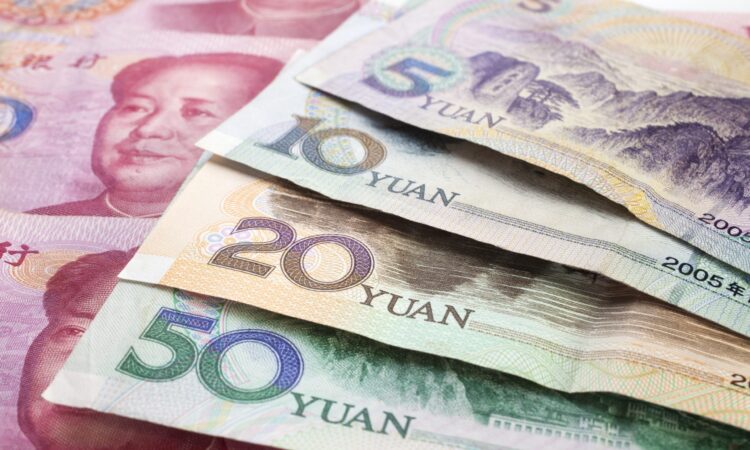
March 18, 2022
Internationalization of the Renmibi via bilateral swap lines
Russia’s brutal war of aggression against Ukraine has triggered unprecedented sanctions being imposed by the US, Europe and other countries on various Russian entities. The most important measure so far is denying the Russian central bank—the Bank of Russia (BoR)—access to most of its international reserves held in major world currencies at Western central and commercial banks. This has prompted speculation about efforts by some other countries to move their international reserves into currencies and institutions perceived to be less vulnerable to possible US and Western sanctions. China and the Renminbi (RMB) have featured prominently in the discussion. Against the current backdrop, this article examines China’s approach to the internationalization of the use of the RMB through a growing number of bilateral swap lines (BSLs) with countries around the world.
BSLs are true backstops to global financial stability
Bilateral swap lines (BSLs) are arrangements whereby two central banks agree to acquire each other’s currency in exchange for its own, either up to a pre-agreed limit or in unlimited amount. Traditionally BSLs have been used to supply foreign currency liquidity to a central bank in need, helping it stabilize a FX liquidity crisis threatening financial stability. Most important has been the network of BSLs maintained by the US Federal Reserves (the Fed) with five permanent counterparts (the Bank of England, European Central Bank, Bank of Canada, Swiss National Bank and Bank of Japan) which have unlimited access to each other’s currencies; and with nine other central banks on an ad hoc basis subject to limited ceilings and duration. The Fed’s BSLs have been crucial in calming widespread dollar liquidity or funding crises during the Global Financial Crisis in 2007-08 and the Covid-19 pandemic financial turmoil in March 2020. By contrast, the IMF can either lend to specific countries in balance of payment crises subject to conditionality or offer precautionary credit lines to pre-approved countries as insurance against market pressures—neither of these facilities are suitable in dealing with generalized dollar liquidity or funding crises.
In addition, the Chiang Mai Initiative (CMI) was launched as a set of BSLs among the 10 ASEAN countries and China, Japan and South Korea after the 1997 Asian financial crisis to supplement existing international liquidity facilities. In 2019 the CMI was transformed into a multilateral arrangement called the Chiang Mai Initiative Multilateralization (CMIM) with a liquidity pool of $240 billion which member countries can draw up to 30% of their entitled shares without having to secure an IMF program. These swap lines have yet to be used but their availability has provided a measure of insurance and comfort to member countries during times of financial turmoil.
China’s BSLs
In addition to the CMIM, China has also entered into bilateral currency swap agreements with 41 countries around the world from 2009 to 2020–with the total amount exceeding RMB 3.5 trillion ($554 billion). While these BSLs can be used to meet RMB (or other local currency) liquidity needs, the motivation behind these agreements has been to settle bilateral trade and investment transactions in RMB (or other local currencies) in order to gradually reduce the reliance on the USD in bilateral transactions both for political reasons and to avoid the volatility of the dollar value of local currencies due to changes in US Fed monetary policy.
Of particular interest is the network of BSLs China has developed with several Asian countries—South Korea (RMB 180 billion or $29 billion), Singapore (RMB 150 billion or $24 billion), Indonesia (RMB 100 billion or $16 billion), Malaysia (RMB 80 billion or $13 billion) and Thailand (RMB 70 billion or $11 billion). The motivation here is to foster local currency settlement (LCS) arrangements of the bilateral trade of each of these countries with China. Indeed, Indonesia has announced that the LCS has cut the country’s USD exposure by $2.53 billion in 2021 and will increase by another 10% in 2022. Moreover, as Indonesia’s Finance Minister Sri Mulyani said “the LCS will create a financial safety net for financial transactions between countries and reduce the vulnerability risks due to global economic shocks”. In short, BSLs promoting local currency settlements have made a modest start but are indicative of a larger and long-term trend toward reducing reliance on the USD in international transactions.
Russia and China’s BSLs
After the Crimea sanctions in 2014, Russia has stepped up efforts to move away from the USD in its $630 billion international reserves. Russia has reduced the share of the USD in its reserves (to 21.2%) while raising the share of other major currencies including the euro (to 29.2%) and the RMB (to 12.8%) as well as gold (to 23.3%). Russia has also settled more of its growing bilateral trade with China in RMB—from 3.1% in 2014 to 17.5% in 2020, and probably much higher by now—facilitated by a RMB 150 billion ($24 billion) bilateral swap line with the PBOC and China’s Cross-border Interbank Payments System (CIPS). Following the more stringent sanctions triggered by the invasion of Ukraine, these bilateral reserves, swap and payment arrangements will certainly grow to offset to some degree Bank of Russia’s inability to transact in USD, euro and pound sterling. Furthermore, Russian banks have issued credit/debit cards linked to China’s Union Pay international system—after Visa and Mastercard exited the Russian market.
It’s important to keep in mind that dealing in RMB will help the BoR avoid sanctions on dealings in the USD, euro and pound sterling, but could expose Chinese financial institutions including the PBOC to possible secondary sanctions by the US—for helping Russian sanctioned entities evade US sanctions. Whether the US is willing to impose secondary sanctions on Chinese financial institutions and whether China will push back using its recently passed blocking law remains important open questions—these moves will significantly elevate the already high tension between the two countries. In this context, there have been media reports that big Chinese state-owned banks have been reticent in dealing with Russian companies even though China’s chief bank regulator said that China would not join the Western sanctions and would “keep normal economic, trade and financial exchanges with all the relevant parties”. Furthermore, US Secretary of Commerce Gina Raimondo has already warned Chinese companies against supplying Russia with high tech products such as semiconductors in contravention of US sanctions.
Roles of digital yuan – and cryptocurrencies
When China launches its central bank digital currency—the eCNY—this will greatly facilitate the use of the RMB in bilateral cross-border trade and investment transactions with China by countries which have already agreed to do so for political reasons. On its own, the availability of the eCNY will not prompt a large scale increase in the international use of the RMB, basically due to China’s closed capital account and lack of full convertibility of the RMB; the relatively under-developed state of China’s financial markets; and the fact that foreign users of the eCNY will be monitored by the Chinese authorities—something which many potential users may be reluctant to accept; unless they’re being forced to by Western sanctions.
Cryptocurrencies have also been mentioned as possible alternative instruments for central banks to hold as parts of their reserves. This is simply not feasible given the scale of the current cryptocurrency markets; the problem that to be useful cryptocurrencies must be converted to other fiat currencies at exchanges which themselves are vulnerable to sanctions; and the fact that a true cryptocurrency requires a public distributed ledger system which will leave the transaction validating power outside the control of a central bank—something no institution enjoying monetary sovereignty can accept.
Conclusions
Western sanctions in particular that on Russia’s central bank—no matter how justified it is as a counter measure against Russia’s invasion of Ukraine—has violated the presumed sanctity of central bank reserves. This will lead to efforts by a number of non-Western countries, especially those feeling vulnerable to sanctions, to develop an alternative payment system to evade and dilute the full impact of sanctions. The RMB has been, and will be, increasingly used in this alternative system.
Importantly, the use of the RMB to settle bilateral trade and investment transactions between China and another country fits well into the Chinese approach to internationalization of the RMB via a multitude of BSLs subject to China’s discretion and control—instead of China liberalizing its capital account and allowing the RMB to be fully convertible i.e. freely usable by anyone in the world. The likely destination of the efforts mentioned above is not to replace the role of the USD in global finance, but realistically to develop an alternative payment system to be used by countries which have made a political decision to do so, especially among the sanctioned countries. Nevertheless, these efforts will fragment the global payment system, accelerating the fragmentation of the global economic system—making it less efficient and productive at the time when more resources are needed to address many urgent challenges facing mankind—such as climate changes, improving healthcare systems to prepare for future pandemics, and growing inequality between the rich and poor in many countries.
Hung Tran is a nonresident senior fellow at the Atlantic Council, former executive managing director at the International Institute of Finance and former deputy director at the International Monetary Fund.

At the intersection of economics, finance, and foreign policy, the GeoEconomics Center is a translation hub with the goal of helping shape a better global economic future.
Related reading
Image: Background of Chinese currency.



